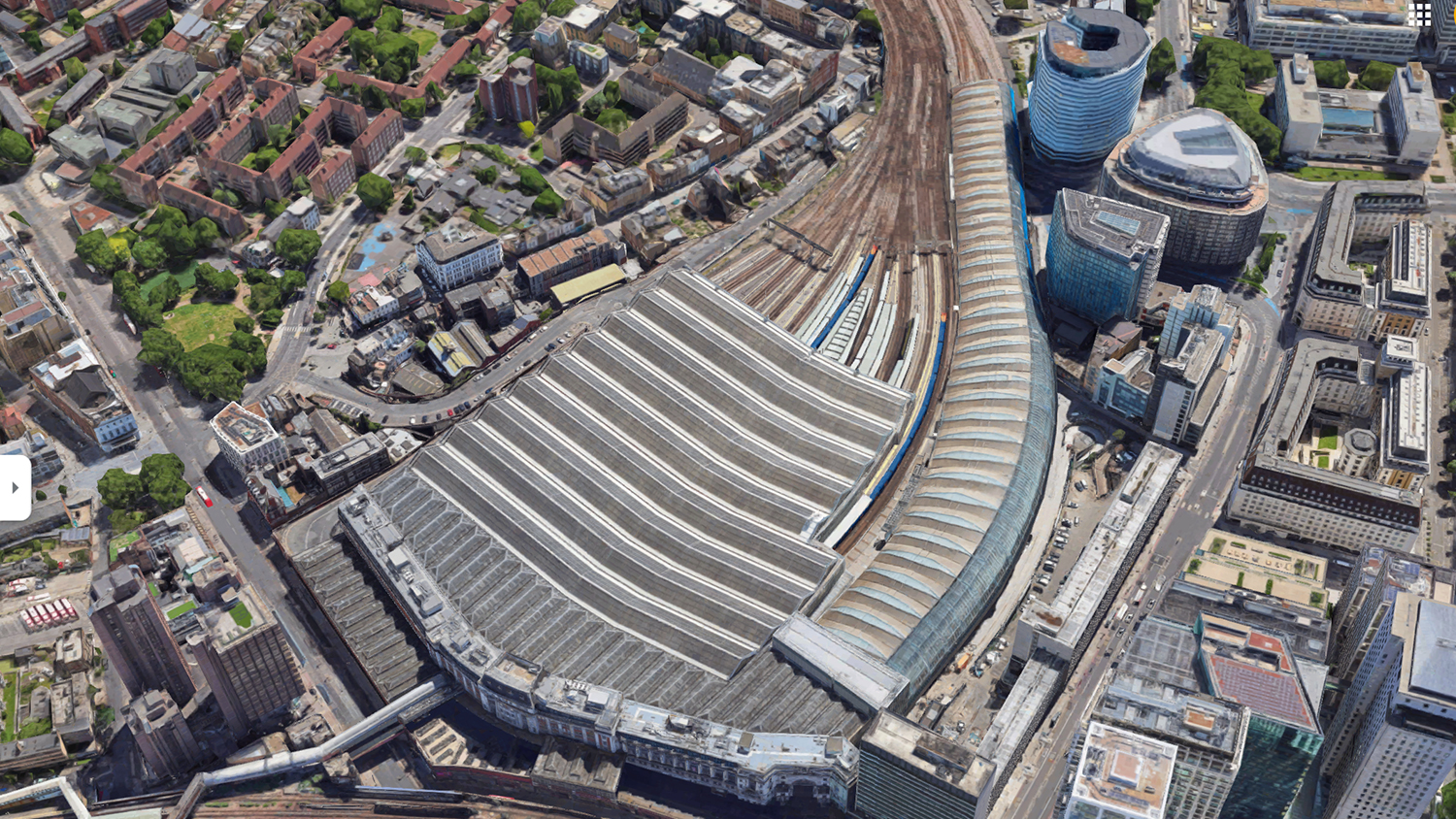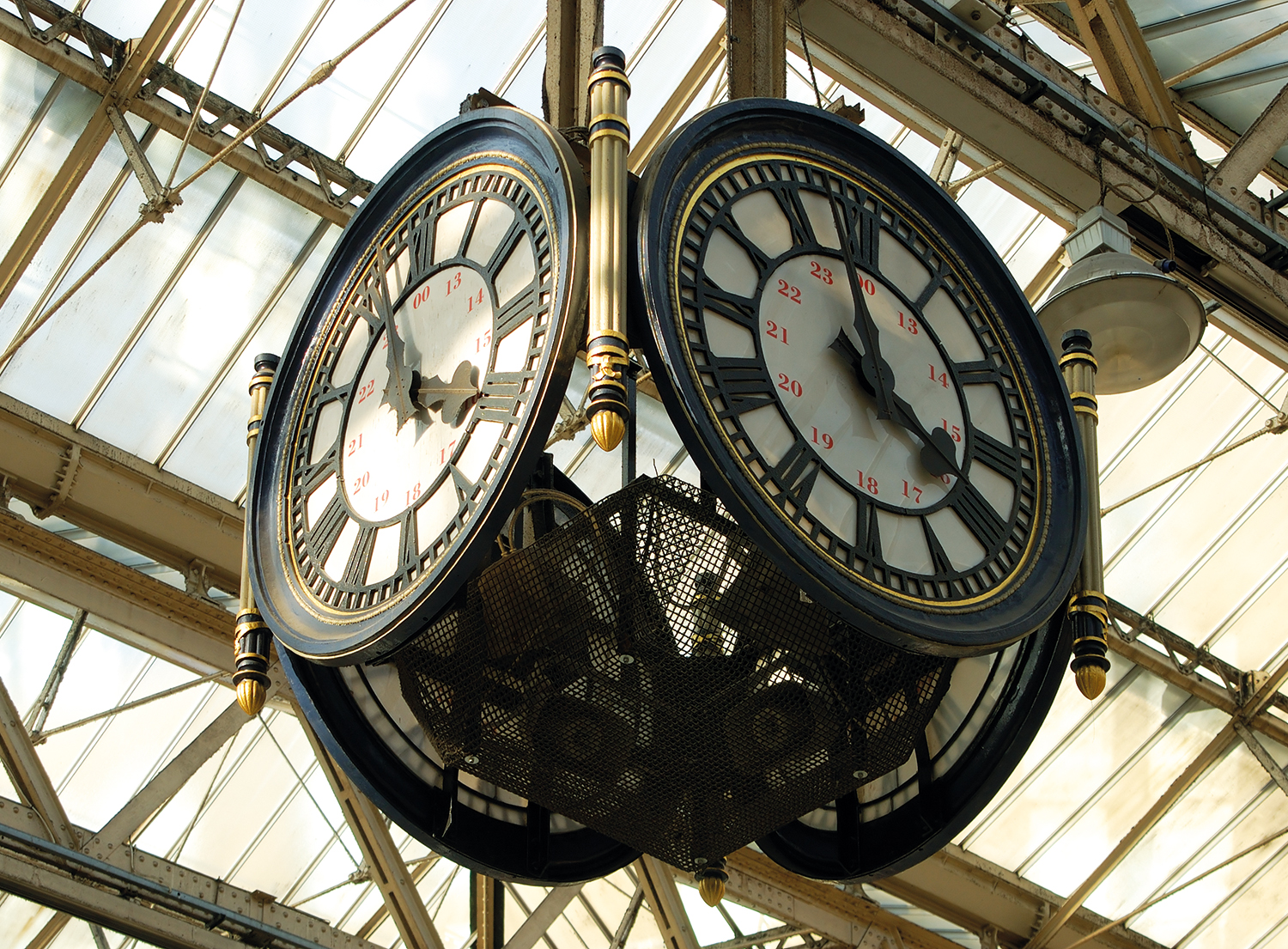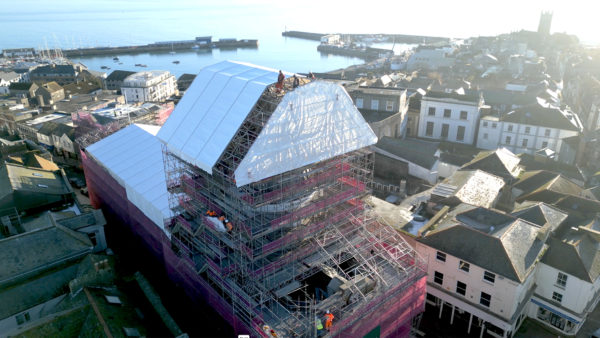
CIOB member Martin Ball manages the buildings on Network Rail’s Wessex route, which includes the complex upgrade of the roof at Waterloo, the UK’s busiest station. He talks to CM about his role.
The roof on Waterloo Station dates back over a century and last summer Network Rail started work on a much-needed £47m renovation programme.
Approximately 10,000 new glazed panels will be installed across the concourse and porte-cochere roofs. The panels will be made from a polycarbonate glazing material which is around 50% lighter in weight, reducing stress on the structure, which was built in 1922.
Overseeing this two-year project on the UK’s busiest station is Martin Ball MCIOB, a senior asset manager for the buildings team on the Wessex rail route for Network Rail.
“My team has overall responsibility for the condition of all fabric and M&E assets within a station, including platforms, canopies, footbridges, buildings, access roads and car parks,” he explains. “We also look after depot train sheds and plant, and lineside buildings such as staffed maintenance team offices and electrical equipment buildings.”
The Wessex route covers a triangular area from Waterloo down to Portsmouth Harbour, and then out west just past Weymouth in Dorset. Ball’s team of four has responsibility for 200 stations, nine depots and 1,700 lineside buildings.
Meeting Waterloo
The Waterloo station roof is one of their biggest projects.
“The concourse roof covers around 8,000 cu m, comprising 25 glazed ‘lantern’ structures, and is partially curved in profile,” Ball explains. “The porte-cochere roofs are located to the north of the station and provide sheltered through-access for passengers, buses and taxis.

CV: Martin Ball MCIOB, senior asset manager, Network Rail
“I have worked on the railway for 11 years: six years as a station asset condition surveyor and five years in asset management with Network Rail. Before this I worked as a building surveyor for a small firm in central London and as a topographical and measured building surveyor in both Leeds and Sussex.
“Our team of four asset managers has a mixture of experience and education, ranging from ‘on the tools’ to surveying, engineering, HNCs, first and post-graduate degrees, internal Network Rail asset examination qualifications and professional membership of the CIOB.
“On a typical day, I usually have to prioritise my workload against four criteria: the work I planned on doing, what meetings I need to attend, volume of emails received, and arising issues. I usually spend a day working from home, a couple of days in one of our many offices and at least one day a week dressed top to toe in orange hi-vis out on site.
“The railway is unlike any other industry and it can take a good year to fully understand all the different interfaces that come into play when interventions are proposed and made.”
“Both structures are aged, and their deteriorating condition led to the installation of debris netting in areas and enhanced condition monitoring.”
Contractor Octavius was appointed for the renovation project, which includes erection of a temporary roof structure that will sit over the current station roof while the existing glass panels are replaced. The work will be completed in phases, with the scaffolding deck moving across the concourse as the project progresses and eight temporary staircases will be installed across the station.
“The high-level concourse roof scaffolding has been hung from the wrought iron roof structure, and an external ‘marquee’ propped off the scaffold to maintain weathertightness, covering the lanterns, and sheltering passengers below,” explains Ball.
As part of the project, enhancements will also be made to the link canopy, inspection walkways will be replaced, plus there will be rewiring and relighting of both roofs. All works are being carried out while the station maintains full operability.
Making the right decisions
“The biggest challenge at Waterloo has been making the right decisions as new issues have been presented,” Ball says.
“We had originally remitted cleaning and touching up of the structural steelwork rather than full redecoration. But the cleaning revealed the underlying paintwork to be in worse condition than expected. The question was whether to stick to the original remit or accelerate full redecoration of the roof structure, which meant securing additional funds and reprioritising other future projects elsewhere on my route.
“This was a significant project change and required approval from our investment panel, which was given. Redecorating the entire concourse roof increased the project cost, but by carrying out this work as part of this project, rather than as a separate future standalone project, it generated a significant efficiency to the business, safeguarding against future interventions to the roof for about 25 years.”
Ball’s work across the Wessex route assets is underpinned by a robust inspection regime.
“Assets critical to safety and the running of trains are inspected annually, and all other assets five-yearly,” he explains. “My team review these surveys and instruct necessary interventions ranging from pothole repairs in car parks to total asset renewals of platforms, canopies or footbridges.”

Funding the project
The work is funded by the Department for Transport in five-yearly control periods (CPs) and the next one (CP7) is starting in April 2024. Ball’s team has a renewals budget (Capex), covering higher-value projects, and an operational budget (Opex), for smaller works and maintenance, both delivered through a framework contractor. Operational works cover emerging defects – such as water leaks, trip hazards and blocked drainage – and planned preventive maintenance – such as asbestos surveys, fire remedials and gutter clearance.
“We provide expert advice for these works, and ensure they are completed within statutory timescales,” says Ball.
“We also liaise with the train operators, other internal Network Rail departments, and we review and respond to requests from passengers, local authorities, retailers – and even politicians!”

Ball says that “safety is at the heart of our business”, but that in turn increases cost.
“As an example, repairs to a platform support wall cannot be carried out when trains are running or when the power is on. A ‘possession’ of the line is planned which stops trains from running, and power to the DC electrified third rail is switched off. A work group under a team of protection staff (as there are still hazards such as maintenance train movements within the limits of the possession) can then carry out repairs. Work is usually carried out at night.
“I am proud that the railway is prepared to meet those extra costs to protect the safety of its staff.”









